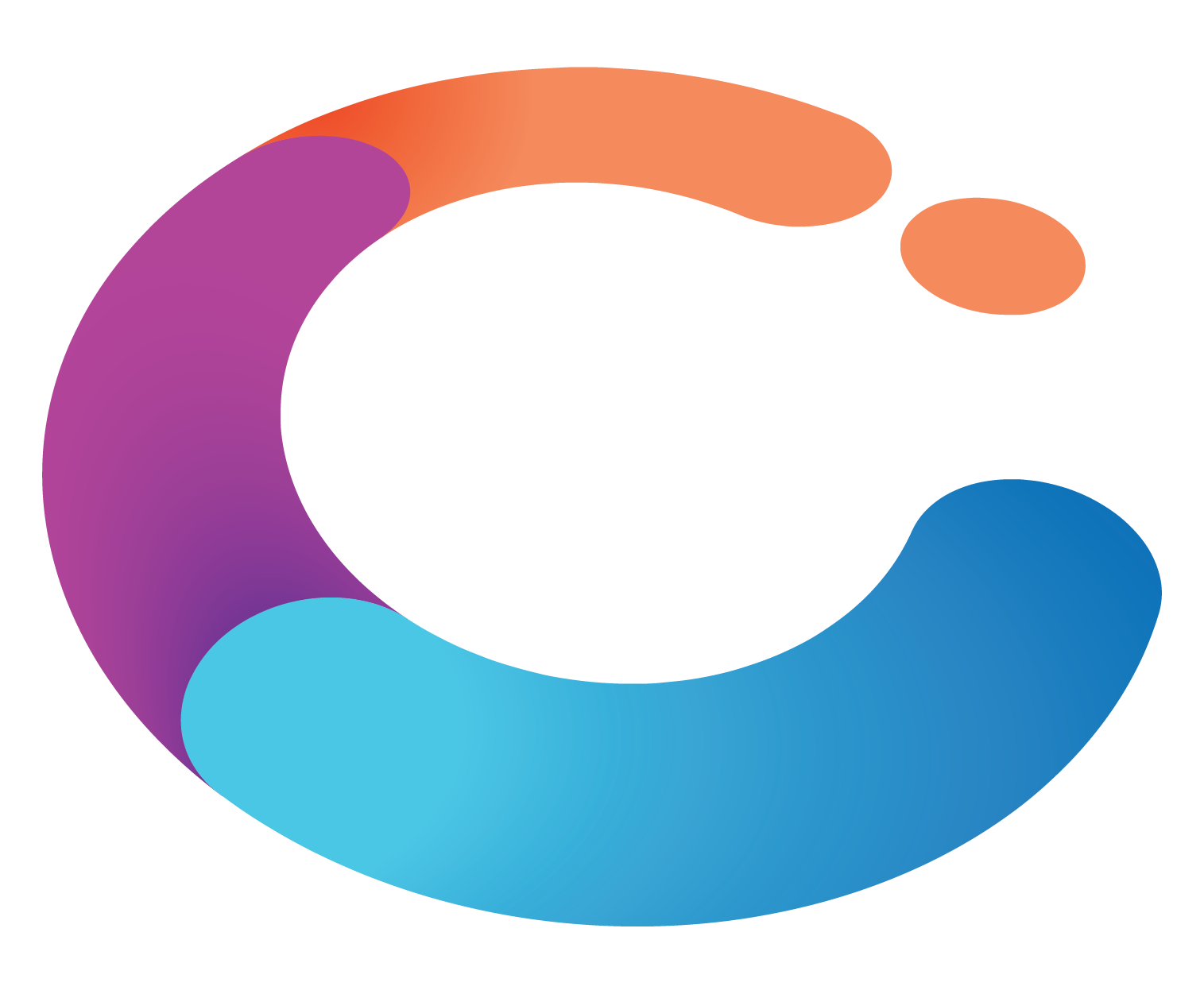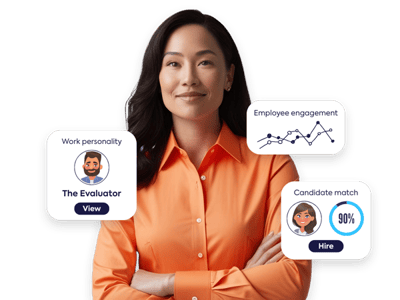9 min read
Human resource systems: complete guide to modern HR technology solutions
 Compono
Jul 1, 2025 10:16:03 AM
Compono
Jul 1, 2025 10:16:03 AM

Picture this: you’re hiring based on gut feeling, your company culture feels like it happened by accident, and your HR team is drowning in a sea of disconnected tools. Sound familiar? You’re not alone. Most organisations still treat hiring like guesswork and let workplace culture form organically—which often means it forms poorly.
The good news? Human resource systems have evolved far beyond simple employee databases. Today’s platforms can transform your entire approach to workforce management, turning chaotic HR processes into streamlined, data-driven operations that actually support all your HR functions and business growth.
Introduction to Human Resource Management
Human Resource Management (HRM) is at the heart of every successful organisation, ensuring that the workforce is managed effectively to achieve business objectives. HR professionals are responsible for a wide range of HR functions, from managing employee data and benefits administration to overseeing performance management and compliance. In today’s fast-paced business environment, a robust human resource management system (HRMS) is essential for streamlining HR processes and automating repetitive tasks that can otherwise consume valuable time and resources.
By implementing advanced HR software and HR software solutions, organisations can centralise core HR functions, gain valuable insights through real-time analytics, and enhance efficiency across the board. These management systems not only simplify day-to-day operations but also contribute to higher employee satisfaction by making information and services more accessible. Ultimately, leveraging a modern human resource management system empowers HR professionals to focus on strategic initiatives that drive business growth and support the organisation’s long-term success.
What are human resource systems?
Human resource systems, commonly known as Human Resource Information Systems (HR information systems or HRIS), are comprehensive software platforms designed to centralise and manage all aspects of human resources within an organisation. Think of them as the central nervous system for your people operations—storing employee data, automating HR processes, and providing the insights you need to make better workforce decisions.
These systems have come a long way since the basic data storage tools of the 1990s. Modern human resources management systems integrate everything from recruitment and onboarding to performance management and compliance tracking. Today’s HR systems are designed for use not only by HR professionals but also by the entire workforce, including job candidates, with features such as mobile compatibility and external stakeholder engagement. Whether you’re a startup with 10 employees or a multinational corporation with thousands of staff, there’s an HR system designed to meet your specific needs.
The terminology can be a bit confusing, with terms like HR information systems (HRIS), HR management systems (HRMS), and HCM (Human Capital Management) platforms often used interchangeably. The key difference lies in their scope and sophistication, with each offering progressively more advanced features for strategic workforce planning.
Core functions of human resource systems
Modern HR systems handle far more than just storing employee data—they also help manage employees by automating routine HR tasks and supporting compliance. Here’s what you can expect from a comprehensive platform:
Employee data management forms the foundation, centralising personal information, employment history, and performance records in one secure location. This eliminates the nightmare of scattered spreadsheets and filing cabinets while ensuring compliance with privacy regulations.
Payroll processing automates salary calculations, tax deductions, and statutory withholdings. Given that each payroll error costs businesses approximately $3.50 to correct in 2024, this automation isn’t just convenient—it’s financially smart.
Time tracking and attendance management replace manual timesheets with digital solutions, biometric systems, and mobile check-ins. This real-time tracking improves employee productivity while ensuring consistent policy enforcement across your organisation’s workforce.
Benefits administration streamlines the management of health insurance, retirement plans, and paid time off. Instead of drowning in paperwork, employees can access their benefits information through self service portals, reducing administrative burden on HR teams.
Performance management tools enable goal setting, regular reviews, and 360-degree feedback. These features tie employee development to measurable business outcomes, supporting better career planning and succession planning initiatives.
Talent acquisition functionality manages the entire employee lifecycle from job posting and candidate screening to interview scheduling and onboarding process coordination. Onboarding modules help integrate new employees and new hires efficiently, ensuring their records are updated and they are quickly brought up to speed within the organisation.
Modern HR systems support a wide range of workforce management processes and offer customisable HR features that can be tailored to meet diverse organisational and industry-specific needs.
Types of HR systems available
The HR software landscape offers several distinct categories:
HRIS platforms focus on core HR functions like employee data management, basic reporting, and compliance tracking. These systems work well for organisations primarily seeking to digitise manual processes and improve data accuracy.
HRMS solutions include all HRIS capabilities plus advanced features like performance tracking, learning management, and workforce analytics. The best HR management systems consolidate HR data, support compliance, and facilitate employee development through comprehensive databases and analytics tools. They’re ideal for companies wanting to enhance efficiency while maintaining comprehensive employee management and looking to automate HR processes to reduce manual work.
Human capital management platforms provide the full suite of HRMS features with added tools for strategic planning, talent analytics, and business intelligence. These systems emphasise long-term workforce planning and value creation, and can automate HR processes for improved efficiency.
Cloud-based HR systems dominate the market, offering remote accessibility, automatic updates, and scalable pricing models. They’re particularly valuable for supporting hybrid work arrangements and global teams.
On-premise solutions provide maximum data control but require significant IT infrastructure investment. While less common today, they remain relevant for organisations with strict data sovereignty requirements.
Workforce Management
Workforce management is a foundational element of effective HR management, encompassing the planning, organisation, and coordination of an organisation’s workforce to meet business goals. HR teams rely on workforce management solutions to optimise employee productivity, ensure the right people are in the right roles, and maintain operational efficiency. These solutions enable organisations to automate payroll, manage scheduling, and provide employee self service options, allowing staff to access their personal records and benefits information with ease.
By streamlining operations through comprehensive workforce management, HR teams can reduce administrative overhead, minimise errors, and respond quickly to changing business needs. The result is a more agile, productive workforce that supports organisational growth and maintains a competitive edge in the marketplace.
Benefits Administration
Benefits administration is a critical HR function that involves managing employee benefits such as health insurance, retirement plans, and paid time off. HR professionals must navigate complex regulations and ensure that benefits are administered accurately and efficiently. A modern human resources management system (HRMS) simplifies benefits administration by automating key tasks like enrolment, eligibility verification, and claims processing.
With the help of HR software and HR software solutions, organisations can provide employees with easy access to their benefits information, empowering them to make informed choices about their coverage. Streamlining benefits administration not only reduces the administrative burden on HR operations but also enhances employee satisfaction by ensuring timely and transparent management of employee benefits. This approach supports a positive workplace culture and strengthens the overall effectiveness of human resources management.
Employee Lifecycle
The employee lifecycle encompasses every stage of an employee’s journey within an organisation, from initial recruitment and onboarding to ongoing development, performance management, and eventual separation. Effectively managing the entire employee lifecycle is essential for attracting, retaining, and developing top talent. HR teams can leverage HR software and HR software solutions to streamline HR processes, automate routine tasks, and gain valuable insights at each stage.
Key features of a modern HRMS—such as performance tracking, career planning, and integrated development tools—enable organisations to support employee engagement and foster a positive work environment. By adopting a comprehensive approach to employee lifecycle management, HR teams can enhance employee satisfaction, reduce turnover, and drive business success. Streamlined HR processes and actionable insights ensure that every phase of the employee lifecycle is managed efficiently and strategically.
Key benefits of implementing HR systems
The transformation from manual HR processes to automated systems delivers measurable improvements across multiple areas:
Error reduction stands out as perhaps the most immediate benefit. Workflow automation and system integration drastically reduce manual data entry, minimising costly mistakes that can impact both compliance and employee satisfaction. These systems also simplify HR processes for both HR professionals and employees, making tasks more efficient and less prone to error.
Time savings are substantial, with organisations typically saving 15-20 hours per week on administrative tasks. This frees up HR professionals to focus on strategic initiatives rather than repetitive tasks.
Enhanced compliance becomes much more manageable with automated tracking and reporting features. Whether you’re dealing with employment law, GDPR requirements, or industry-specific regulations, modern systems help ensure HR compliance by keeping organisations aligned with workplace regulations and policies, reducing legal risks.
Employee self service capabilities can reduce HR team workload by up to 40%. When employees can independently update personal information, request leave, and access pay stubs, it creates a win-win situation for everyone involved.
Real-time analytics provide valuable insights into workforce trends, turnover risks, and productivity patterns. These reporting tools enable data-driven decision making that supports business growth objectives.
Remote work support has become crucial in today’s distributed workplace. Mobile-accessible platforms ensure HR operations continue seamlessly regardless of physical location.
Essential features to look for in HR systems to streamline HR processes
When evaluating HR software solutions, certain features distinguish truly effective platforms:
Self service portals should allow employees to access their profiles, leave balances, and payroll information independently. This transparency improves employee satisfaction while reducing administrative requests.
Mobile applications supporting both iOS and Android devices are essential for modern workforce management. Employees need access to time tracking, communications, and document management on the go.
API integrations enable seamless integration and connectivity with existing business software applications like accounting systems, project management tools, and financial management platforms. This integration eliminates data silos and streamlines operations.
Multi-language and multi-currency support serves globally distributed teams and simplifies multinational compliance requirements.
Advanced security features including encryption, two-factor authentication, and role-based access controls protect sensitive employee data and ensure regulatory compliance.
Customisable workflows allow organisations to tailor approval processes and business rules to match their unique requirements and industry standards.
Together, these features deliver comprehensive HR solutions that promote employee well-being and business success.
Leading HR system providers
Several standout providers dominate different market segments. Leading platforms support HR by providing extensive data management and compliance capabilities, helping organisations uphold best practices and efficiently manage HR functions:
BambooHR serves over 25,000 organisations with its user-friendly interface and comprehensive feature set. It’s particularly popular among small to medium businesses seeking an intuitive, all-in-one solution. Another leading HR platform is HiBob, which offers a similarly broad range of HR functionalities for businesses aiming to enhance productivity and engagement.
Workday provides enterprise-grade human capital management for Fortune 500 companies, offering advanced analytics and deep integration capabilities for complex organisational structures.
ADP Workforce Now combines payroll software with HR management, primarily targeting mid-market businesses in North America with robust compliance and reporting features.
Employment Hero dominates the Australian market with strong local compliance features and competitive pricing, making it ideal for businesses operating in the Asia-Pacific region.
Rippling takes a unique approach by integrating HR, IT, and financial management in one platform, enabling unified management of people, devices, and applications.
Sage HR delivers affordable, modular solutions for small to medium businesses, allowing organisations to add functionality as they grow.
Implementation best practices
Successful HR system implementation requires careful planning and execution:
Conduct a thorough needs assessment before selecting any platform. Identify current pain points, define clear objectives, and understand how the system will support your business needs.
Plan a phased implementation timeline spanning 3-6 months. This typically includes data migration, user training, and testing phases designed to minimise operational disruption.
Establish strong data governance policies ensuring accuracy, privacy, and security throughout the transition. Clean, well-organised data is crucial for system success.
Invest in comprehensive training for HR staff, managers, and employees. User adoption depends heavily on confidence and competence with the new platform.
Start with core modules like employee records and automated payroll before expanding to advanced features like analytics and learning management systems.
Implement robust backup procedures and disaster recovery planning to protect critical HR data and ensure business continuity.
Cost considerations and ROI
Understanding the financial implications helps justify investment in human resources management systems:
Subscription costs for cloud-based platforms typically range from $5-46 AUD per employee per month, depending on features and vendor. This predictable pricing model makes budgeting straightforward.
Implementation costs include software licensing, data migration, training, and ongoing vendor support. While initial investment can be substantial, the long-term benefits usually justify the expense.
Return on investment commonly becomes positive within 12-18 months, driven by time savings, error reduction, improved compliance, and increased productivity across the organisation.
Total cost of ownership must account for annual maintenance, periodic upgrades, and additional user licences as your team grows.
Future trends in HR technology
The HR evolution continues with exciting developments on the horizon:
Artificial intelligence integration now handles predictive analytics for attrition risk, smart scheduling, and automated candidate matching. These AI-powered tools streamline talent acquisition while improving hiring outcomes.
Enhanced employee experience platforms focus on engagement, wellness, and development tools that recognise their impact on retention and performance.
Advanced people analytics provide granular insights into workforce demographics, productivity patterns, and organisational health metrics.
Collaboration tool integration creates deeper connectivity with platforms like Microsoft Teams and Slack, fostering seamless HR workflows in distributed organisations.
Blockchain technology offers emerging use cases for secure credential verification and tamper-proof employment records.
Addressing the hiring guesswork problem
One of the most significant challenges facing organisations today is the persistence of hiring as guesswork. Too many companies still rely on intuition and ad-hoc methods rather than data-driven approaches, resulting in inconsistent outcomes and high turnover rates.
Modern human resource systems address this challenge through sophisticated talent management features and data analytics. Platforms like Compono’s Work Personality Framework represent the next evolution, using scientifically validated personality and motivation assessments to match candidates with roles more effectively.
By embedding these frameworks within recruitment and development processes, organisations can move beyond guesswork to strategic, evidence-based hiring decisions that improve cultural fit and long-term employee success.
Managing tool overwhelm and engagement disconnection
HR leaders face another critical challenge: the proliferation of point solutions for different HR functions. Separate tools for recruitment, performance reviews, learning management, and employee engagement create administrative burden and integration complexity that overwhelms HR teams.
Comprehensive human resources management systems solve this problem by consolidating multiple functions into unified platforms. This integration enables better data flow, reduces training requirements, and provides holistic views of the entire employee lifecycle.
Additionally, many organisations struggle with employee engagement programs that feel disconnected from daily work activities. Modern HR systems address this by integrating engagement initiatives directly into workflow processes, making participation more natural and impactful.
The most effective platforms also support professional services and development tools that align with career planning objectives, ensuring engagement efforts contribute meaningfully to both employee satisfaction and business growth.
Human resource systems have transformed from simple record-keeping tools into strategic platforms that support every aspect of workforce management. By addressing fundamental challenges like hiring guesswork, accidental culture formation, and HR team overwhelm, these systems enable organisations to build more intentional, effective approaches to managing their most valuable asset—their people.
Whether you’re looking to automate basic HR tasks, implement sophisticated workforce analytics, or create more engaging employee experiences, the right human resource system can provide the foundation for sustainable growth and organisational success.
Ready to move beyond hiring guesswork and accidental culture? Start by assessing your current HR challenges and exploring how modern human resource systems could transform your approach to workforce management.
Take the next step.

Ready to move beyond hiring guesswork and accidental culture?
Speak to one of our experts about how you can build high performing teams and a strong workplace culture.
Related

HRIS system: complete guide to human resource information systems
Managing employee data shouldn’t feel like herding cats. Yet for many organisations, HR processes remain scattered across spreadsheets, filing...

Workforce Engagement and Why It’s the Key to Organisational Success
Workforce engagement goes beyond feel-good initiatives and coffee catchups. It’s about creating a workplace where employees are genuinely connected...




.png?width=383&height=200&name=team%20(1).png)
.png)